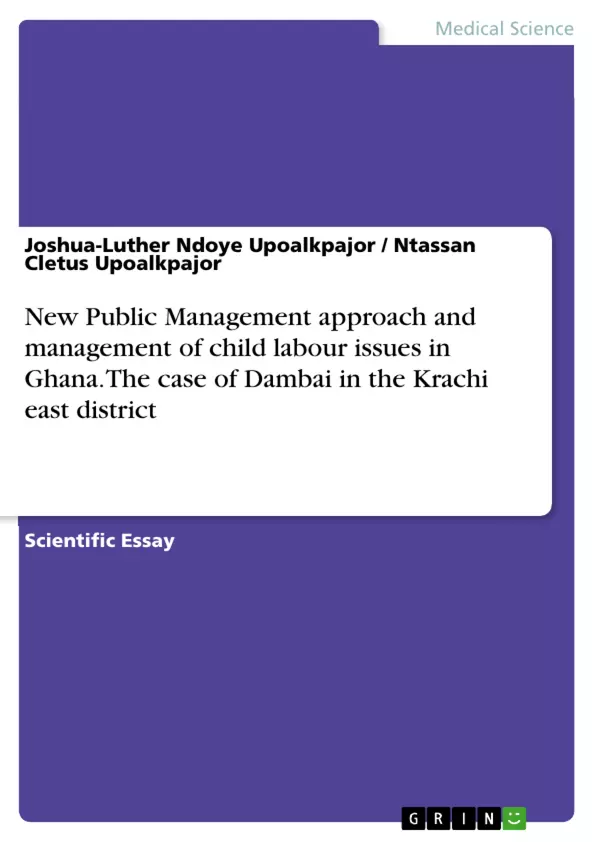Different approaches have been implemented over the years to minimise Child Labour issues but the issues kept recurring. This study sought to explore how New Public Management (NPM) approach could be used to manage child labour issues in Dambai.
The study found that child labour was very prevalent in the study area; and parents ignorant about the laws governing children activities. Some respondents believed that adopting the principles of the New Public Management (NPM) approach to dealing with child labour would be more effective than the current bureaucratic system of management. Integration of elements of NPM will be applicable in the fight Child Labour. NPM should be incorporated in current and future reforms programs. Certain conditions and institutions such as an informed citizenry and popular participation in policy makingshould be strengthened before implementing NPM reforms. It is recommended that institutions responsible for managing Child Labour issues adopt the NPM approach to dealing with the menace. It is also recommended that culture be considered seriously when policies and programmes to deal with Child Labour are developed and implemented.
Inhaltsverzeichnis (Table of Contents)
- 1.0 BACKGROUND TO THE STUDY
- 2.0 METHOD AND TECHNIQUE
- 3.0 FINDINGS AND DISCUSSIONS
- 3.1 Socio-Demographic Characteristics of Respondents
- 3.2 State of child labour in dambai
- 3.3 Applicability of NPM
- 4.0 SUMMARY, CONCLUSION AND RECOMMENDATIONS..
- 4.1 Summary of Principal Findings
- 4.2 Recommendations.
- 4.3 Policy recommendations...
- 4.4 Managerial recommendations.
- 4.5 Future research recommendations..
- REFERENCES ....
Zielsetzung und Themenschwerpunkte (Objectives and Key Themes)
This study investigates the use of the New Public Management (NPM) approach to address child labour issues in Dambai, Ghana. The research aims to analyze the current state of child labour in the area, explore the reasons behind parental resistance to child labour elimination measures, and assess the suitability of the NPM approach for managing child labour in Dambai.
- Child Labour in Ghana
- Parental Attitudes towards Child Labour
- New Public Management Approach
- Cultural Influences on Child Labour
- Effective Management Strategies for Child Labour
Zusammenfassung der Kapitel (Chapter Summaries)
- 1.0 BACKGROUND TO THE STUDY: This chapter provides an overview of the global context of child labour and trafficking, highlighting international conventions and legal frameworks designed to protect children's rights. It discusses the prevalence of child labour in Ghana and the existing legal and institutional structures aimed at addressing the issue.
- 2.0 METHOD AND TECHNIQUE: This section outlines the research methodology employed in the study, including the research approach, data collection methods, and the sample of respondents.
- 3.0 FINDINGS AND DISCUSSIONS: This chapter presents the key findings of the study, including socio-demographic characteristics of respondents, the prevalence of child labour in Dambai, and the analysis of the applicability of the NPM approach. It also explores factors contributing to parental resistance to child labour eradication measures.
Schlüsselwörter (Keywords)
The study focuses on the themes of child labour, New Public Management, parental attitudes, cultural practices, and effective management strategies in the context of Ghana.
- Quote paper
- Joshua-Luther Ndoye Upoalkpajor (Author), Ntassan Cletus Upoalkpajor (Author), 2017, New Public Management approach and management of child labour issues in Ghana. The case of Dambai in the Krachi east district, Munich, GRIN Verlag, https://www.grin.com/document/355047



